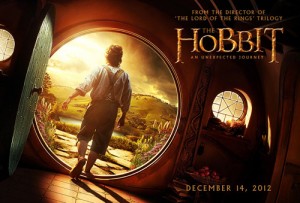Conclusions
In filming a Hobbit trilogy, it is arguable that the director and writers are not just doing a ‘prequel’ in the traditional sense, with the end of the prequel narrative dovetailing with FotR.

If this is what is planned, it would be unprecedented in film: rendering a world through trilogies that are not just sequential but also complementary and parallel. These will be 3D films not just visually, but in terms of the narrative too: both trilogies are an angle on the same world. If one watches them both, each presented from the angle of different protagonists and story-lines, one will end up in your head with a ‘3D’ picture of a whole world.
Which is what Tolkien created: a world that is almost real in its detail, layers, complexities, and wholeness.
About the author
Thomas Monteath is a life-long Tolkien aficionado, who still believes –- with apologies to the excellent Andy Serkis -– that the finest Gollum was Peter Woodthorpe in the BBC’s 1981 Radio adaptation. In real life he is an academic in the UK, who can on occasion be found propping up the bar at the Eagle & Child. These views are his own, and do not necessarily represent those of TheOneRing.net or its staff.
These views are his own, and do not necessarily represent those of TheOneRing.net or its staff.


